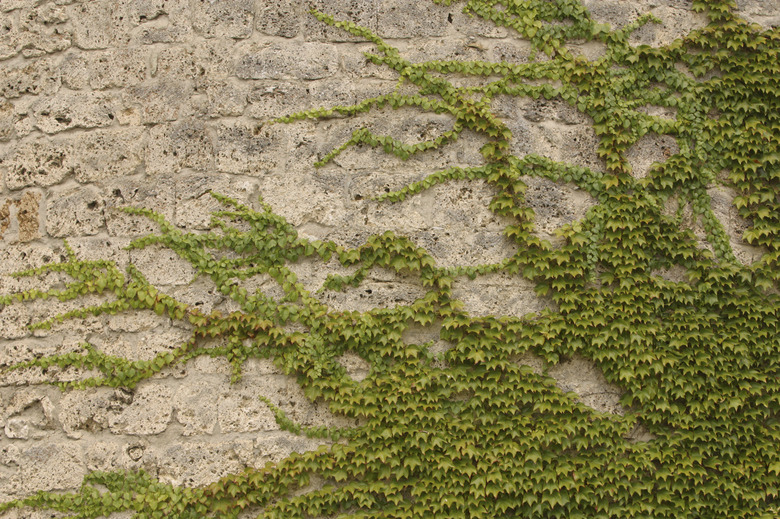What Are The Treatments For English Ivy Leaf Spot?
English ivy can be found almost everywhere; it is most the popular ground cover in the United States and a very common ornamental houseplant. Leaf spot is an all too common problem with many types of English ivy, both indoors and outdoors. The leaf spot could be caused by a bacteria or a fungus, but treatment for both is the same. The best treatments for English ivy leaf spot are a combination of manually removing affected leaves, improving air circulation and, if all else fails, the application of a fungicide.
Step 1
Fungal and bacterium leaf spots appear on the leaves as small red-brown spots or brown-black spots with a wet or oily looking substance around the spot and sometimes a yellow halo as well. Both of them can cause the leaves to discolor, shrivel and eventually fall off. The fungal infection can spread to the stem of the plant and eventually kill the ivy.
Treatment
Step 1
The first stage of treating English ivy leaf spot, according to the University Of Kentucky College of Agriculture, is to remove all affected leaves and stems of the ivy. No matter which pathogen is causing the leaf spot, it must be removed and destroyed. Clear away all dead leaves and any other debris surrounding the ivy. This treatment alone may not take care of the problem. You might need to take further action and buy a fungicide. The most commonly prescribed chemical treatment for English ivy leaf spot is a copper fungicide, but it has varying degrees of success. Many copper-based fungicides are available. Ask the gardening center or nursery about the types of copper fungicide it sells and the proper way to use them. If you prefer using more organic methods, a mild form of copper-based fungicide called copper soap is available, with a lower solution of copper. Typical treatment for English ivy is to apply the fungicide to the infected ivy once a week for however long it takes. The American Ivy Society says that chemical treatments are only marginally successful.
Step 2
- Fungal and bacterium leaf spots appear on the leaves as small red-brown spots or brown-black spots with a wet or oily looking substance around the spot and sometimes a yellow halo as well.
- Typical treatment for English ivy is to apply the fungicide to the infected ivy once a week for however long it takes.
Control and Prevention
Step 1
Practicing good maintenance with English ivy is the best way to control leaf spot diseases. Constantly wet foliage is the main cause of leaf spot disease. This is easy to control if your ivy is an indoor plant. Simply keep its leaves dry, and water at the base of the plant. If your English ivy grows outside as a ground cover, this is not always practical. During wet seasons, the best you can do is to keep your ivy as thinned out as possible. Thin it and prune it during the fall, and in the spring clear away all dead leaves and debris under and around the ivy. When you do water your outdoor ivy, do it in the early morning so it can dry out during the day. Try to water it at root level, keeping the leaves as dry as possible.
Step 2
- Practicing good maintenance with English ivy is the best way to control leaf spot diseases.
- Try to water it at root level, keeping the leaves as dry as possible.
